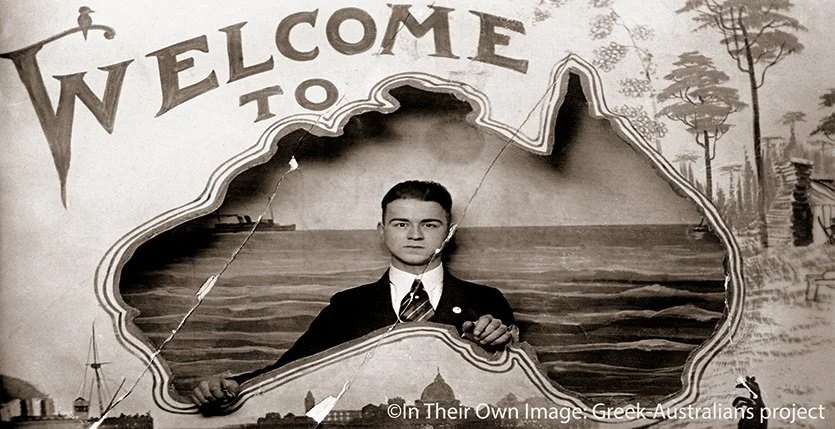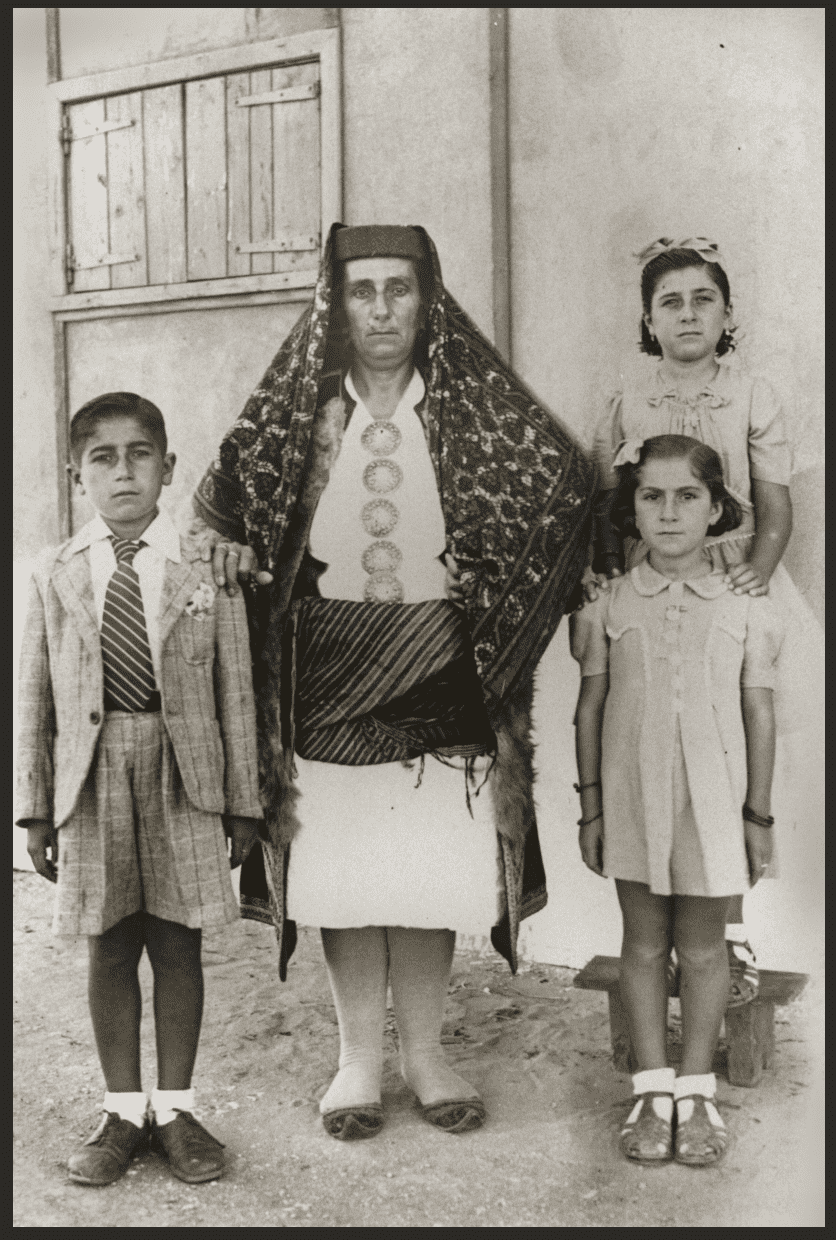

Greek City Times is proud to present a weekly historical snapshot
from the archives of the ‘In Their Own Image: Greek Australians’ national project
by photographer Effy Alexakis and historian Leonard Janiszewski.
The Karageorge Family
The Karageorge family encapsulates much of the migration story of Kastellorizians leaving for Australia during the early to mid twentieth century, as well as highlighting the personal vicissitudes of Eleni Karageorge and her children in their quest to reach Australia to join her husband Georgios.


In 1943 British forces occupied Kastellorizo (also known as Megisti, the smallest of the Greek Dodecanese islands in the eastern Mediterranean). Heavily bombed by the Germans, the island’s inhabitants of approximately 1,000 were evacuated, first to Cyprus and then to Palestine. With Germany’s surrender in 1945, the British arranged for the Kastellorizians to return home. Unfortunately, the lives of thirty-five Kastelloriians and two crewmembers were lost when the vessel ‘Empire Patrol’ caught fire and sank while returning 497 of the island’s evacuees. Those who returned found Kastellorizo in ruin. War, fire and neglect had destroyed much. Many Kastellorizians subsequently decided to follow their compatriots who had been leaving since the late nineteenth century for lands such as Australia. Eleni Karageorge and her children eventually left for Australia in 1949. She had been separated from her husband, and the children from their father, for ten years: Georgios Karageorge had migrated to Australia in search of work before World War II. Australia became home for the majority of Kastellorizians.
Con:
“My father [Georgios] was here [in Australia] before the war. He came out in 1939. There wasn’t enough work in Greece. I have two uncles, my mother’s brothers – the Allagiotis brothers – they left Greece and went to France. There wasn’t any work there, so they emigrated to Australia around the early 1930s. My father was corresponding with them. They were carpenters, but apparently there was no work for carpenters [on arriving in Australia], so they went to Queensland to cut sugarcane. Then my father came. He came to Perth. When he arrived in Perth, a lot of his mates [Greeks he had met in Perth] – they told him that there was a lot of work in Darwin. My father was a carpenter, a boat builder. So he went to Darwin and was building houses for the Aboriginal people. He then got in touch with my uncles in Queensland and told them that there was a lot of work in Darwin. They went to Darwin… My father was there from 1939 up to 1943, when the Japanese was bombing Darwin [raids lasted from February 1942 to November 1943]. Then he and my two uncles came to Perth… When we left Greece [Con, his mother and sisters] we went to Port Said, but we couldn’t get a passage boat to come over to Australia. All the boats, they used to come from England, and they were loaded with English migrants. We waited there about six months. We were sick and tired of waiting… so we came over here by freighter… My father was in Perth, but we didn’t know where it [the freighter] was going to take us in Australia… First we went to Bombay in India. We stayed there thirty days in Bombay. It was a cargo ship and we had to remain on board the boat. From Bombay we went to Singapore. From Singapore we went to Mackay in Queensland. From there we come down to Western Australia by rail… My first impression of Australia was terrible… The people were so behind it was unbelievable. I was a teenage boy then, around sixteen, and I was well dressed. I had a beautiful European haircut and when I went to walk in the street [soon after arriving in Australia] everybody used to turn to look at me – like a convict. I looked different to the local boys.”
Photos: Effy Alexakis
Historical Research: Leonard Janiszewski
© In Their Own Image: Greek-Australians National Project Archives
Since the early 1980s, Effy Alexakis, a photographer, along with historian researcher Leonard Janiszewski, have been travelling around Australia photographing and collecting stories. They have also photographed Greek-Australians in Greece and documented some amazing histories. The images and text provide personal, diverse and powerfully moving insights, about opportunities, hopes and challenges. Collectively, these stories provide personal perspectives of a diasporic Hellenic identity. Their archive encompasses photography, both historical and contemporary, taped interviews and literary materials.
They have published 3 books and numerous articles, and their projects are ongoing. The photographs have been widely exhibited throughout Australia and in Greece.
VISIT THEIR LATEST PROJECT: Greek Cafés & Milk Bars of Australia | Facebook
Donald Trump has announced sweeping tariffs ranging from 10% to 49% on U.S. trade partners…
A powerful storm struck Serifos on Wednesday, flooding streets and overwhelming residents as part of…
Saints and Feasts: 5th Thursday of Lent: This most compunctionate Canon- which is truly great…
President Donald Trump unveiled a new policy to impose reciprocal tariffs on countries worldwide, calling…
Archaeologists from Sapienza University have unearthed remnants of a 2,000-year-old garden beneath Jerusalem’s Church of…
Turkish Foreign Minister Hakan Fidan will attend a NATO meeting in Brussels on April 3-4,…